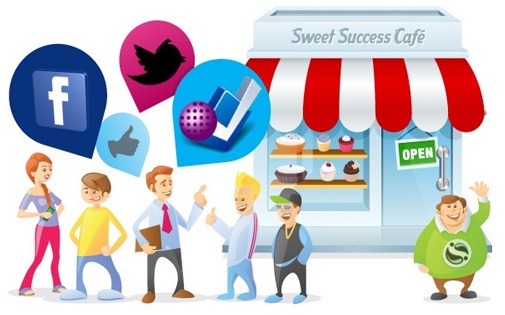Ask different people about what social selling is and expect to hear different answers. In my opinion, Brian Solis wraps it up nicely in the hootsuite’s youtube video below — it’s all about Listening, Learning & Engaging.

“Simply tracking – not to mention influencing – the dialogue on fast-multiplying numbers of social channels can be a daunting proposition for brands.” Ryan Holmes, Hootsuite CEO
To sell is also to understand how the customers progress along the path to purchase. A sales funnel is a concept most sales personnel are familiar with. How does it work? The journey, as shown below, starts at the top with the company’s brand-awareness marketing campaigns and ends with the sales when the customers get out the bottom of the funnel to, theoretically, begin the journey anew. It assumes that the customers become aware of the products at the top of the funnel, not prior.

Photo Credit: Theresa Delgado
Many of modern day’s Customer Relationship Management (or CRM) software – in terms of apps and programs – build on this sales funnel concept, acquiring and identifying leads for various companies’ products and putting those leads neatly into distinct stages of the funnel.
However, according to Ryan Holmes, Hootsuite’s CEO, “social media isn’t simply a new stage of the sales funnel that can be layered on top of the old model. Social media has twisted the familiar sales funnel into something almost unrecognizable.” Does he mean that there is no pre-determined path to purchase or no series of predictable steps to a sale and that a sale hardly represents the end of a customer’s journey? What does he exactly mean?

Credit to John Barrows
To understand what he means, let’s look into the five steps of the Consumer Decision Process (CDP):
- Need recognition
- Information search
- Alternative Evaluation
- Purchase
- Post-purchase
The consumers’ needs can be either functional or psychological… or both. Once the customers recognize their needs, they search for an (objective) information internally (using his or her own memory, past experiences and knowledge) or externally (reaching out to family, friends, salesperson or simply turning to the internet). They may reach out to family and friends through social media such as Facebook and Twitter asking for suggestions. They also are likely to visit the review sites such as Yelp for an (objective) information including other alternatives.
Often with social media, the first three steps mentioned above can happen at the same time. For example, your friends, family, followees (people you are following) and followers – or F4 – feed you with information leading you to recognize your needs. In doing so, you are bypassing ads and branded content altogether. From the funnel concept perspective, social media simply and effectively drives more prospects into the top of the funnel.
At the same time, the consumers’ social media interactions – including their journeys on online review sites and comparison – do not seem to be the behaviours of the consumers obediently plunging down the sales funnel. Remember you’re bypassing the ads! Another reason why the funnel concept doesn’t hold true is that by the time the consumers make contact with the company of their interest (whether they visit the store in person or online), they are already deep into the funnel and not at the top.

Photo Credit: Dr. Kat Cohen
Just an extra simple small push as simple as (another) related post on Facebook, Twitter, Instagram, Pinterest or a blog by one of the F4 (remember friends, family, followees and followers) can lead to a purchase. As for the last post-purchase step, the consumers often share photos of their new purchase on Instagram, pin them on their Pinterest board and rave about it on Twitter, Facebook or even a blog.
What if they are not happy with their purchase decision? No problem for most of the retail items since a consumer-friendly return policy allows the consumers to easily return or exchange them in an original condition. For the purchases that cannot be returned, social media can come in handy where people can post about their (dissatisfying) experience on various social media sites.
So yes, Holmes is right that there is no simple pre-determined path to purchase that flows well from one step to another. Yes, there is no series of predictable steps to a sale. And yes, a sale does not mean the end of a customer’s journey. It is an ongoing process where research, interaction and feedback occur simultaneously, not merely at the beginning and end of any process including the CDP’s 5 steps mentioned above.

Photo Credit: Julia Urlaub, Taiga Company
If used appropriately, social media can actually help the businesses understand and engage with their consumers better. The following are a few of what it can do for the businesses.
What Social Media can do for businesses
- Social media can compress and cut out the entire stages of the funnel concept (for example, a salesperson reaches out to a hot lead directly on Twitter)
- It can give consumers countless new entry and exit points (for instance, prospects turn to Facebook for feedback from friends before purchasing)
Citation: Holmes, Ryan. “Has Social Media Killed This One Critical Sales Tool?” Hootsuite Social Media Management Has Social Media Killed This One Critical Sales Tool Comments. N.p., 18 Aug. 2014. Web. 22 Aug. 2014.

 Follow
Follow











